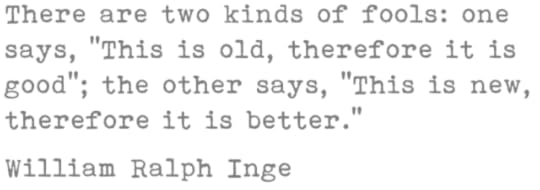Andrew Furst's Blog, page 143
February 28, 2015
Relics – Theism vs Atheism
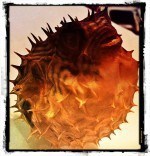 The Relics series are throwback articles from previous years. They seem timeless enough to be relevant today.
The Relics series are throwback articles from previous years. They seem timeless enough to be relevant today.
Try as you will, you cannot annihilate that eternal relic of the human heart, love. - Victor Hugo
Theism vs Atheism
Half the people in the world think that the metaphors of their religious traditions, for example, are facts. And the other half contends that they are not facts at all. As a result we have people who consider themselves believers because they accept metaphors as facts, and we have others who classify themselves as atheists because they think religious metaphors are lies.
— Joseph Campbell (Thou Art That: Transforming Religious Metaphor)
There was a period where I read and watched a lot of Joseph Campbell. As a scholar he is truly formidable. He quotes and relates Pagan, Christian, Native American, Hindu, and Buddhist literature effortlessly. He pulls us deftly and urgently to the Holy and with equal fervor resists the idolatry of religious and materialist dogma.
The atheist will agree with Campbell because he doesn’t accept 4th century B.C. cosmology as factual. On the other hand theists can see Campbell as an ally because he affirms the mystery. But both are more likely to resent him because he portrays them both as missing the point.
My attraction to Joseph Campbell is rooted in his story. He points to Hinduism and Buddhism as pivotal in his awakening to the power of mythology. No words that I could offer would adequately explain his views on mythology and its value to humanity. I encourage you to read and listen to him. He’s friendly, accessible and forceful. I’ve watched the series Mythos I & II as well as Hero’s Journey and would recommend any of his books.
When Given a Choice, Choose Yes
From the Buddhist perspective, I think Campbell beautifully captures the essence of the middle way. There are always two perspectives. The provisional and the absolute. Campbell calls the provisional the historical and the absolute the mystery. Where the two meet is life.
If you find yourself firmly rooted in either, you’re missing a part of the action.
 The great Indian Buddhist Saint Nagarjuna formulated the philosophy of the Mādhyamaka (Middle Way). He takes as the basis for his argument the two possible opposing views on the fundamental nature of being. He leads us to the conclusion that if we reject either view we are cutting ourselves off from the truth. Both views are valid aspects of reality. If we deny this then we will continue to suffer.
The great Indian Buddhist Saint Nagarjuna formulated the philosophy of the Mādhyamaka (Middle Way). He takes as the basis for his argument the two possible opposing views on the fundamental nature of being. He leads us to the conclusion that if we reject either view we are cutting ourselves off from the truth. Both views are valid aspects of reality. If we deny this then we will continue to suffer.
It’s subtle and heady stuff, but at it’s essence it is Campbell’s historical and mystic dimensions. We live in time and space. But the mystery (Brahman, Shiva, God) is outside of time and space and beyond the language of temporal things. We are forced to use metaphor to speak of the divine.
If we fail to maintain this distinction we fall into the trap of reading metaphor as fact. In Orthodox Hinduism, Buddhism, and yes, Christianity this is called idolatry.
‘Everything exists': That is one extreme. ‘Everything doesn’t exist': That is a second extreme. Avoiding these two extremes, the Tathagata teaches the Dhamma via the middle… – Nagarjuna
Atheists like Richard Dawkins make their point by stating that the metaphors cannot be facts. Theist apologists like John Lennox respond to atheists by devising anthropomorphic design and intervention hypothesis that respond to these challenges. While my sympathy lies with the theists, they are trapped by doctrine that requires a believer to accept some of the metaphors as fact.
Freedom from this connundrum is probably best found in humility. A humility that acknowledges that the metaphor is probably the best way we can speak of the divine. To assert otherwise is commiting the sin of pride.
Get Each Week's Relics article in your email boxFirst Name:
Last Name:
Email address:
Weekly Series:
One Minute Meditations
Tiny Drops (Photography series)
Compass Songs (My Favorite Poems)
Dialectic Two-Step
Modern Koans (interesting questions)
Sunday Morning Coming Down (Music Videos)
Relics (Timeless Republished Articles)
Say What?
Quotes
The post Relics – Theism vs Atheism appeared on Andrew Furst.
February 27, 2015
Question – Who Should We Be Thanking?
Create your free online surveys with SurveyMonkey , the world’s leading questionnaire tool.
Who Should We Be Thanking?
The post Question – Who Should We Be Thanking? appeared on Andrew Furst.
Modern Koans – Could Meditation Practice Relate To Cosmology?
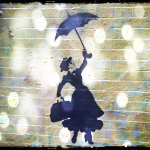 Modern Koans is an ongoing series that recognizes that good questions are often more important then their answers.
Modern Koans is an ongoing series that recognizes that good questions are often more important then their answers.
The riddles of God are more satisfying than the solutions of man. ― G.K. Chesterton
In What Way Could Meditation Practice Relate To Cosmology?
cosmology – the science of the origin and development of the universe.
This is a great question, one ripe for many angles of inquiry. Here are a few thoughts on it.
We are part of the universe, looking inward is the universe looking back on itself.We are part of the universe, our origin and development follow the same rules and behaviors of the cosmos. Looking inward is a wonderful way to generate questions and hypothesis about it.We are part of the universe, the mysteries of the self; introspection, subjectivity, and life are contained in us. Looking inward helps us to form a frame of reference to poke at theories that fail to accurately or completely explain the cosmos.We are part of the universe. Looking inward shows us that the boundaries between ourselves and others are less real than we thought they were.We are part of the universe. Discovering the challenges of introspection, gives us important information about how we should view the reliability of and obstacles to observation.What do you think? I’d love to hear your thoughts in the comments section below. Get Each Week's Modern Koan in your email boxFirst Name:
Last Name:
Email address:
Weekly Series:
One Minute Meditations
Tiny Drops (Photography series)
Compass Songs (My Favorite Poems)
Dialectic Two-Step
Modern Koans (interesting questions)
Sunday Morning Coming Down (Music Videos)
Relics (Timeless Republished Articles)
Say What?
Quotes
The post Modern Koans – Could Meditation Practice Relate To Cosmology? appeared on Andrew Furst.
February 26, 2015
William Ralph Inge on Fools
One Minute Meditation – Time Lapse
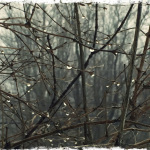 One Minute Meditations is an ongoing series of short videos, poems, and commentary intended as a meditation. Offered as an opportunity to step back from your cyber routine and settle into a more natural rhythm, if only for a minute.
One Minute Meditations is an ongoing series of short videos, poems, and commentary intended as a meditation. Offered as an opportunity to step back from your cyber routine and settle into a more natural rhythm, if only for a minute.
This week’s One Minute Meditation is the first time lapse film I’ve ever done. I can’t say I wasn’t pleased. The cloud formations marching gently across the sky give you a sense of the pace that nature can take.
Time LapseWhere does the time go?
But then, where does it come from?
Nowhere when you’re there.
 The song “Cylinder One” by Chris Zabriskie is used under Attribution License.
The song “Cylinder One” by Chris Zabriskie is used under Attribution License.
First Name:
Last Name:
Email address:
Weekly Series:
One Minute Meditations
Tiny Drops (Photography series)
Compass Songs (My Favorite Poems)
Dialectic Two-Step
Modern Koans (interesting questions)
Sunday Morning Coming Down (Music Videos)
Relics (Timeless Republished Articles)
Say What?
Quotes
The post One Minute Meditation – Time Lapse appeared on Andrew Furst.
February 25, 2015
Meditation Techniques – Singing Bowl Therapy
Cambridge’s Tibet’s Jinten‘s owner, Tsering Topgyal, taught me this wonderful sequence of singing bowl therapies that allow you to deeply feel your body. There are two parts.
 For this sequence, I use my 8 inch Tibetan singing bowl with a soft mallet and a wooden mallet. There are many who offer much more elaborate practices and more specific instructions on which bowl to use, but I find that keeping it simple and using what you have is better than nothing. My preference is to lower frequency bowls. A tingsha might be too jarring to the ears. But to each his own.
For this sequence, I use my 8 inch Tibetan singing bowl with a soft mallet and a wooden mallet. There are many who offer much more elaborate practices and more specific instructions on which bowl to use, but I find that keeping it simple and using what you have is better than nothing. My preference is to lower frequency bowls. A tingsha might be too jarring to the ears. But to each his own.
First, have the person you are offering this to sit in a comfortable position facing you. Explain in advance what you will be doing. Surprising them will have the opposite effect.
Have them close their eyes. Hold the singing bowl by the tips of your fingers in a way that is comfortable. You’ll be holding it for a few minutes.
Place the singing bowl about 5-8 inches away from the targeted area. Gently strike the bowl with the mallet and hold or move the bowl as directed below until the reverberation is over.
Crown of head – hold the bowl above the head and gently strike with the malletBrow and both ears – strike the bowl with the bowl 6-8 inched in front of the brow. While the bowl is ringing, slowly move the bowl to the person’s left ear, back to the front, to the right ear, and finally return to the brow. Time it such that the bowl finishes vibrating on the last pass to the brow.Throat – strike the bowl 6-8 inches from the throatHeart -Solar plexusCenter of Gravity – just below the navelCenter of the hips – Be clear that you will be doing this and be sensitive to the persons discomfort with your being near the genitals. I tend to place the bowl further awaay.

Next have the person sit in a sitting massage chair or a similar arrangement resting comfortably. Ideally they will be sitting, leaning forward gently supported. In this series you will be placing the bottom of the bowl directly on the spine, pressing it gently from the inside. Instead of using the mallet to strike the bowl, you will use the wooden one to create the singing sound. Go to this link to learn how to play a singing bowl. Do this at each of the following points.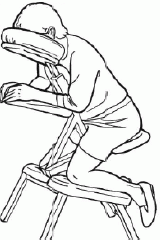
If you have a singing bowl, give it a try. Once I do it for someone, they always want more.
The post Meditation Techniques – Singing Bowl Therapy appeared on Andrew Furst.
Tiny Drops – Lines of the World
 Tiny Drops is an ongoing iPhoneographic series. The images represent moments of noticing on my part. For you, they are an offer to pause, observe, and take that noticing into your life. All photos are mine unless noted otherwise.
Tiny Drops is an ongoing iPhoneographic series. The images represent moments of noticing on my part. For you, they are an offer to pause, observe, and take that noticing into your life. All photos are mine unless noted otherwise.
 These works by Andrew Furst are licensed under a Creative Commons Attribution-NonCommercial-ShareAlike 4.0 International License.
These works by Andrew Furst are licensed under a Creative Commons Attribution-NonCommercial-ShareAlike 4.0 International License.
Click on images to view the full size slide show.
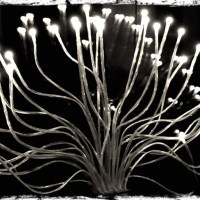 optic light filter
optic light filter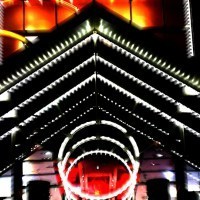 mall carnival
mall carnival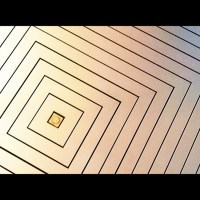 geometric view
geometric view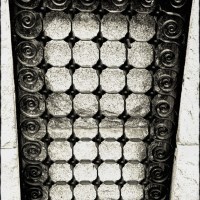 grate work
grate work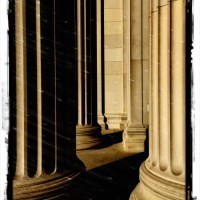 MIT Pillars random
MIT Pillars random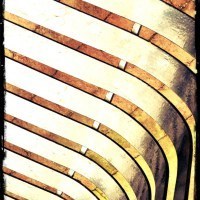 bench slats filterGet Each Week's Tiny Drops in your email box
bench slats filterGet Each Week's Tiny Drops in your email boxFirst Name:
Last Name:
Email address:
Weekly Series:
One Minute Meditations
Tiny Drops (Photography series)
Compass Songs (My Favorite Poems)
Dialectic Two-Step
Modern Koans (interesting questions)
Sunday Morning Coming Down (Music Videos)
Relics (Timeless Republished Articles)
Say What?
Quotes
FIVE LIMITLESS THOUGHTS
May all living beings have happiness and its causes
May all be free from unhappiness and its causes
May all dwell in equanimity, free of attraction and aversion
May all quickly find the great happiness that lies beyond all misery
May all enjoy inner and outer peace now and forever
NAMO AMITOFOThe post Tiny Drops – Lines of the World appeared on Andrew Furst.
February 24, 2015
Say What? – A Few Words On Peace

Say What? is an ongoing series of laconic exchanges on Buddhism in the format of a comic strip.
This shirt is dry clean only. Which means... it's dirty. - Mitch Hedberg
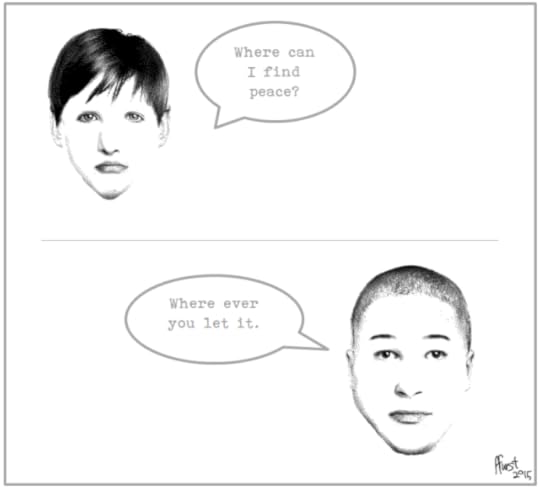
A few words on Peace
Get Each Week's Say What? in your email box
First Name:
Last Name:
Email address:
Weekly Series:
One Minute Meditations
Tiny Drops (Photography series)
Compass Songs (My Favorite Poems)
Dialectic Two-Step
Modern Koans (interesting questions)
Sunday Morning Coming Down (Music Videos)
Relics (Timeless Republished Articles)
Say What?
Quotes
The post Say What? – A Few Words On Peace appeared on Andrew Furst.
Compassion Has Its Enemies
Pity, Moral Outrage, and Fear…
A wonderful talk by Joan Halifax at TEDWomen.
I want to address the issue of compassion. Compassion has many faces. Some of them are fierce; some of them are wrathful; some of them are tender; some of them are wise. A line that the Dalai Lama once said, he said, “Love and compassion are necessities. They are not luxuries. Without them,humanity cannot survive.
Buddhist roshi Joan Halifax works with people at the last stage of life (in hospice and on death row). She shares what she’s learned about compassion in the face of death and dying, and a deep insight into the nature of empathy.
The post Compassion Has Its Enemies appeared on Andrew Furst.
February 23, 2015
Dialectic Two-Step – What Place Does Adi-Buddha Have In Pure Land Thought?
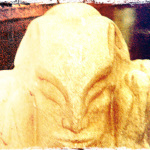 Dialectic Two-Step is an ongoing series of my thoughts on questions that come my way.
Dialectic Two-Step is an ongoing series of my thoughts on questions that come my way.
Wisdom lies neither in fixity nor in change, but in the dialectic between the two. - Octavio Paz
What Place Does Adi-Buddha Have In Pure Land Thought?If we were to agree that Adi-Buddha represents the primordial Buddha (Samantabhadra, Vairocana, or Vajradhara) or perhaps more familiarly our Buddha nature, then we might be able to discover where it hides in the Pure Land tradition.
There are lots of layers on which to comment. The first being – all of the teachings of Buddhism share amongst them the seed of liberation. But as teachings, they are impermanent, and therefore imperfect, efforts to point out the nature of suffering and the path to cessation of suffering. The Sutra on the Buddha of Infinite Light tells us:
He dwelled in the realization that all dharmas are empty, devoid of distinctive features, and not to be sought after, and that they neither act nor arise; he thus realized that all dharmas are like magical creations.[1]
Adi-Buddha is a symbol that may speak to you well. I encourage you to follow where it takes you. However, finding a symbol’s place in a particular teaching is like trying to discover the meaning of Finnegan’s Wake by looking up each word in the dictionary. I’m not sure it will further the effort.
As to a home for Buddha nature in the Pure Land school we might look to the Sutra on the Visualization of the Buddha of Infinite Light. In the instruction we’re told that “Your mind produces the Buddha’s image, and is itself the Buddha” [1]
According to Shinran, the meditating mind implicitly refers to the entrusting mind given by the Buddha; since this mind is the Bodhi-mind and the cause of Buddhahood, it becomes a Buddha.[1] I would suggest that the Bodhi-mind, is the self-originating Buddha called Adi-Buddha.
But perhaps this is all a little too esoteric. Remembering the vow of Dharmākara (the future Amitabha), we would be wise to shift our efforts from self-power activities to reliance on other-power. For in dwelling on the impermanence of all dharmas (especially self) Bodhi-mind arises.
If, when I attain Buddhahood, sentient beings in the lands of the ten directions who sincerely and joyfully entrust themselves to me, desire to be born in my land, and think of me even ten times should not be born there, may I not attain perfect enlightenment.[1] [1] From THE THREE PURE LAND SUTRAS, part of the BDK English Tripiṭaka Series. Translated from the Chinese by Hisao Inagaki in collaboration with Harold Stewart Page on bdk.or.jp
Get Each Week's Dialectic Two Step in your email boxFirst Name:
Last Name:
Email address:
Weekly Series:
One Minute Meditations
Tiny Drops (Photography series)
Compass Songs (My Favorite Poems)
Dialectic Two-Step
Modern Koans (interesting questions)
Sunday Morning Coming Down (Music Videos)
Relics (Timeless Republished Articles)
Say What?
Quotes
The post Dialectic Two-Step – What Place Does Adi-Buddha Have In Pure Land Thought? appeared on Andrew Furst.

